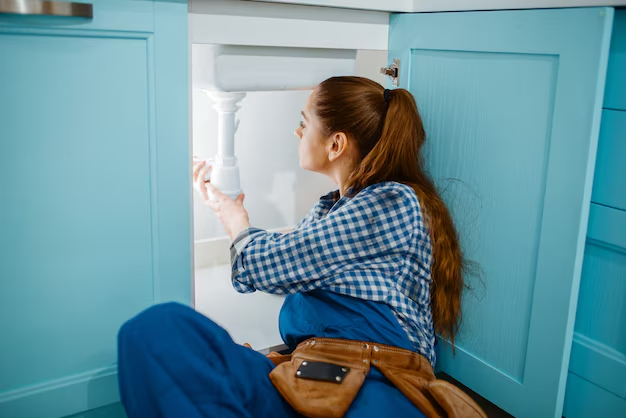Why Is My Refrigerator Dripping Water Inside? Understanding and Resolving Common Issues
Have you ever opened your refrigerator to find a puddle forming beneath your milk carton or on one of the shelves? Water dripping inside a refrigerator can be not only inconvenient but also an indicator of an underlying problem. It's time to dive deep into the possible reasons behind this pesky issue and explore how you can address it.
🔍 Common Causes of Water Dripping Inside Your Refrigerator
1. Blocked Defrost Drain
The defrost drain is a critical part of your refrigerator's system, allowing melted frost to exit the freezer and evaporate in a drain pan. When this drain becomes blocked, excess water can back up into the fridge, leading to puddles or dripping.
How It Happens:
- Debris Build-Up: Food particles, plastic bits, or other debris can clog the drain.
- Ice Formation: Sometimes, ice accumulation itself might block the defrost drain.
What You Can Do:
- Cleaning: Gently flush the drain with warm water to clear out any blockage.
- Periodically inspect the drain area and clean any visible debris.
2. Improper Leveling
Refrigerators need to be slightly tilted backward to allow the coolant to flow correctly and prevent water from pooling. If your fridge is not level, water might not drain as intended.
How It Happens:
- Uneven Floors: Placement on an uneven surface can disrupt leveling.
- Improper Adjustment: Not correctly adjusting the refrigerator's feet during installation.
What You Can Do:
- Adjust the Feet: Use a level and adjust the screws on the refrigerator’s feet until it tilts slightly backward.
3. Faulty Door Seals
Faulty or weakened seals can allow warm air to enter the refrigerator, causing excess moisture and ice build-up, which eventually melts and results in water accumulation.
How It Happens:
- Seal Damage: Wear and tear over time or physical damage from external force.
- Improper Cleaning: Using harsh chemicals might degrade seal quality.
What You Can Do:
- Regular Inspection: Check for any visible gaps or tears in the seals.
- Seal Replacement: Consider replacing worn-out seals with compatible replacements.
4. Temperature Settings
Incorrect temperature settings can lead to condensation forming inside the refrigerator, particularly if set too cold.
Optimal Settings:
- Refrigerator: Generally, ensure it’s set around 37°F (3°C).
- Freezer: Aim for 0°F (-18°C).
What You Can Do:
- Adjust Settings: Regularly review your settings to ensure they're within the optimal range.
- Avoid Frequent Opening: Limit opening the fridge door to maintain a stable temperature.
🛠️ Maintenance Tips to Prevent Dripping
Routine Cleaning
Regular cleaning helps prevent blockages in drains and ensures seals remain effective. Clean the interior of your refrigerator with mild detergent and water, avoiding abrasive substances that could damage surfaces.
Check and Replace Components
Regularly inspect critical components such as seals and drains. Early identification of wear or damage can save you from more significant repairs down the line.
Regular Defrosting
If your refrigerator doesn’t self-defrost, ensure you manually defrost it periodically to prevent excess ice buildup, which can lead to drainage issues over time.
Understanding Related Refrigerator Issues
Excessive Freezer Ice
If your freezer is generating too much ice, it could point to broader issues with temperature regulation. Excessive ice can block venting, leading to an inefficient refrigerator operation.
Unusual Noises
Strange sounds might indicate failing components such as the compressor or evaporator fan, which can affect overall performance and might indirectly relate to water buildup.
Inconsistent Temperatures
Fluctuating temperatures can signal problems with the thermostat, leading to excessive condensation and potential water leaks inside the fridge.
Checking for Manufacturer-Specific Issues
Different brands might have peculiarities impacting how they tackle drainage and water management. Always refer to your refrigerator’s manual for manufacturer-specific guidance, as certain models may have unique concerns.
Preventative Measures and Best Practices
📋 Quick Reference Summary:
- Check Drains: Regularly clear the defrost drain.
- Level the Fridge: Ensure the refrigerator is correctly leveled.
- Monitor Seals: Inspect and replace door seals as necessary.
- Adjust Temps: Maintain optimal temperature settings.
- Routine Cleaning: Clean the interior and exterior surfaces routinely.
- Inspect Components: Keep an eye on critical components, addressing issues as they arise.
Final Insight: Keeping Your Refrigerator in Top Shape
Addressing water dripping inside your fridge begins with understanding the common causes and implementing straightforward preventive measures. By maintaining proper temperatures, keeping components clean and functional, and inspecting your unit regularly, you can extend your refrigerator's lifespan and ensure it operates efficiently. Though it can be frustrating to find unexpected water, with these tips and understanding, you can tackle the issue effectively, keeping your fridge — and all its contents — in perfect condition.
